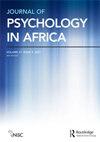Heavy episodic alcohol use among adults: Prevalence and correlates in Central African Republic
IF 0.8
4区 心理学
Q3 PSYCHOLOGY, MULTIDISCIPLINARY
引用次数: 0
Abstract
Heavy episodic drinking (HED) is associated with negative health consequences. The goal of the study was to assess HED among the general adult population in Central African Republic (CAR). In a cross-sectional survey in CAR (Bangui city and Ombella M’Poko region), 3 301 people (range = 25 - 64 years) completed structured interview questions, including on alcohol use, and anthropometric and blood pressure measurements were taken. Logistic regression was used to assess associations between sociodemographic indicators, health factors, and past-month HED. Results indicated that 33.0% of participants reported HED (26.4% in women and 44.4% in men), and among past 12-month drinkers 63.1% reported HED. In the final logistic regression model, male sex, aged 35 to 44 years, ten or more years of education, current tobacco smoking, current smokeless tobacco use, second-hand smoke exposure, and having four or more meals outside the home in the past week increased the odds of HED. One-third of the study population reported HED, suggesting a need for population-level interventions to reduce HED.成人间歇性大量饮酒:中非共和国的流行情况及其相关因素
严重的间歇性饮酒(HED)与负面的健康后果有关。该研究的目的是评估中非共和国(CAR)普通成年人的HED。在中非共和国(班吉市和Ombella M 'Poko地区)进行的横断面调查中,有3 301人(年龄范围= 25 - 64岁)完成了结构化访谈问题,包括酒精使用问题,并进行了人体测量和血压测量。使用逻辑回归来评估社会人口指标、健康因素和过去一个月的HED之间的关系。结果表明,33.0%的参与者报告了HED(女性26.4%,男性44.4%),在过去12个月的饮酒者中,63.1%报告了HED。在最后的logistic回归模型中,男性、年龄在35岁到44岁之间、受教育年限在10年及以上、目前吸烟、目前使用无烟烟草、接触二手烟以及在过去一周内在室外用餐4次及以上增加了患HED的几率。三分之一的研究人群报告了HED,这表明需要采取人群层面的干预措施来减少HED。
本文章由计算机程序翻译,如有差异,请以英文原文为准。
求助全文
约1分钟内获得全文
求助全文
来源期刊

Journal of Psychology in Africa
PSYCHOLOGY, MULTIDISCIPLINARY-
CiteScore
1.70
自引率
16.70%
发文量
62
期刊介绍:
Findings from psychological research in Africa and related regions needs a forum for better dissemination and utilisation in the context of development. Special emphasis is placed on the consideration of African, African-American, Asian, Caribbean, and Hispanic-Latino realities and problems. Contributions should attempt a synthesis of emic and etic methodologies and applications. The Journal of Psychology in Africa includes original articles, review articles, book reviews, commentaries, special issues, case analyses, reports and announcements.
 求助内容:
求助内容: 应助结果提醒方式:
应助结果提醒方式:


